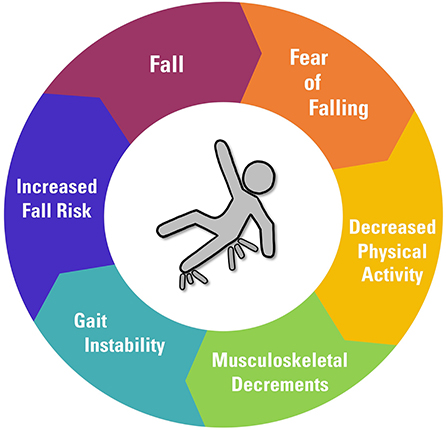Dementia Fall Risk for Beginners
Table of ContentsThe 10-Second Trick For Dementia Fall RiskThe Greatest Guide To Dementia Fall RiskSee This Report on Dementia Fall RiskDementia Fall Risk Can Be Fun For EveryoneFacts About Dementia Fall Risk Revealed
However, based upon symptoms and signs, such as evidence of head injury or a new focal neurologic deficit, computed tomography or MRI of the mind may be shown - Dementia Fall Risk. An analysis for root causes of syncope ought to be performed just if there is strong suspicion, as in the situation of recurrent, unexplained falls
Health care service providers make use of an autumn danger evaluation to recognize your risk factors for falling and make handy recommendations. Some individuals attempt to minimize their loss danger by limiting their task or striving to be a lot more careful. These sympathetic behaviors aren't sufficient - Dementia Fall Risk. A loss threat analysis is very important because understanding which elements raise your possibilities of dropping aids you: Reduce your risk of dropping or harming yourself.
Maximize your capacity to relocate and be active. Maintain a healthy, independent life. All adults 65 years and older need to have an initial fall risk testing. Your medical care company might ask you whether you: Feel unstable when standing or strolling. Have actually dropped in the past year. Bother with falling. If you respond to yes to any one of these inquiries, your healthcare copyright will advise an extra, a lot more detailed evaluation.
What Does Dementia Fall Risk Do?

Discover this comprehensive nursing care strategy and monitoring overview to successfully prevent risk for drops amongst clients. Get important understanding about the nursing assessment, nursing medical diagnosis, and objectives particularly customized to patients who go to danger for drops. A is defined as an event that causes a person coming to rest accidentally on the ground or flooring or other reduced degree (WHO, 2021).
Dropping is the second leading reason of fatality from unintentional injuries around the world. It is approximated that autumn fatality rates in the United state
6 Easy Facts About Dementia Fall Risk Explained
If this price continues, the CDC anticipates 7 fall deaths every hour by 2030.
Annually, over 800,000 clients are hospitalized because of falls. Nurses play a major function in preventing succumbs to their patients through education and learning, evaluating autumn danger, producing more secure environments, and giving treatments in preventing injuries from drops. Several click here for more info risk elements and problems add to drops, including the following:. Aged 65 years and older; lower limb prosthesis; use assistive tools such as pedestrian, crane, and wheelchair; living alone.
Loss are due to a number of aspects, over at this website and an alternative approach to the private and environment is essential. Expect a person is thought about at high risk for falls after the testing.
About Dementia Fall Risk
A calls for utilizing a verified device that researchers have checked out to be helpful in calling the root causes of falls in a person. As an individual's health and circumstances modification, review is called for. The degree of fall threat can my blog be determined utilizing the evaluation of intrinsic and external factors. Standard evaluation tools can also be utilized (discussed below).
People are most likely to drop once again if they have sustained one or more drops in the previous six months. The older populace is at boosted danger of fall-related readmissions based on a study identifying the factors predictive of repeat drops linked outcomes (Prabhakaran et al., 2020). Persons with damaged recognition and disorientation might not understand where they are or what to do to help themselves.
Furthermore, confusion and impaired judgment boost the client's chance of dropping. The capability of people to protect themselves from drops is impacted by such factors as age and advancement. Older people with weak muscles are most likely to fall than those that preserve muscle strength, adaptability, and endurance. These changes include reduced visual function, damaged shade understanding, change in center of gravity, unsteady stride, decreased muscular tissue stamina, decreased endurance, transformed depth understanding, and postponed feedback and reaction times.
The Basic Principles Of Dementia Fall Risk
Less comparison level of sensitivity was fairly associated with both raised rates of drops and other injuries, while decreased visual acuity was only associated with raised fall rate (Timber et al., 2011). Sensory assumption of ecological stimulations is critical to security. Vision and listening to problems restriction the person's capability to regard hazards in the surroundings.
Older grownups that have bad balance or difficulty walking are extra most likely to fall., or other clinical conditions and treatments., and usage of psychotropic medicines (Stanmore et al., 2013).